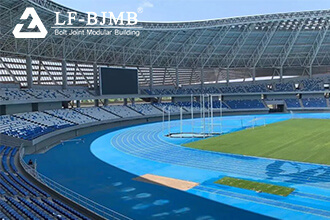+86 177 5193 6871
222, Block B, Diamond International, Guozhuang Road, Xuzhou, Jiangsu, China

Although truss has many advantages, it also has some shortcomings:
Large structural space: Since truss is a triangular mesh formed by multiple straight lines, its spanning height is large, which brings bulky and large hills to the building body shape, and this problem is especially prominent for single-story buildings.
Low lateral stiffness: Steel roof trusses are especially prominent and need to be braced to unite each joist into a whole so that they have spatial stiffness to resist longitudinal lateral forces. The bracing is required to determine the cross-section according to the structural requirements (length to slenderness ratio), which results in steel consumption and failure to maximize the use of the material.
Inconvenient transportation: Due to the large size of the structure, transportation and installation are difficult and require large tonnage of transportation and lifting equipment.
Higher cost: Compared with other structure forms, joist has higher manufacturing cost, which requires the use of high strength steel and precise processing.
To summarize, although truss has many advantages, its shortcomings also need to be noticed. These factors should be fully considered when designing and using to ensure safety, economy and practicality.
